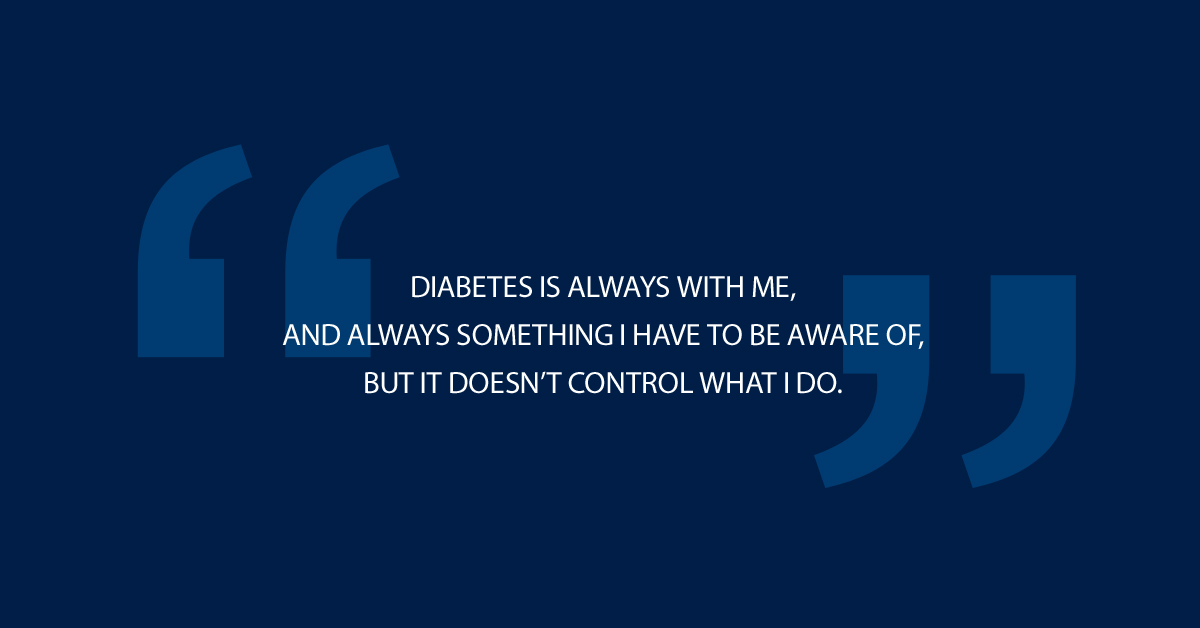5 tips for traveling with diabetes

For 15 years MiniMed Ambassador, Jonni Lightfoot, has traveled all over the planet with diabetes as the bass player and bandleader for the band, Air Supply. You may remember him from previous guest blogs such as Rock N Roll Road Trip With Diabetes and A Little Help from a Friend: How I Started Insulin Pump Therapy. Today, Jonni joins us again, this time to share his 5 best diabetes travel tips he’s learned over the years.
Traveling with diabetes and an insulin pump can be daunting at times. Traveling over 200+ days a year for the past 15 years with diabetes and my insulin pump, I’ve learned a few tips you may find helpful.
1. Packing
My mentality is “better to have more of what you need, then not enough,” so I pack extra of everything. Inside a multi-fit case, I pack at least 3 infusion sets, reservoirs, insulin, batteries, Tegaderm tape, alcohol swabs to keep things clean, and a package of syringes in case I go through all of my Quick-sets. The last thing I put in my case (and always carry with me) are hard candies, just in case I go low or the SmartGuard technology on my pump alerts.
2. Insulin
You may be thinking why would I forget to bring insulin? But it's not about packing a bottle of insulin, it’s about packing at least two full bottles in different bags (I always put my insulin in my carry-on bags, never my checked-bags). I cannot tell you how many times my insulin has been lost, misplaced, and even stolen while on the road. Having that extra vile packed in a different bag has helped me avoid having to locate a pharmacy on the road, or trying to communicate my needs in a foreign language.
3. Storing insulin
While on the road, many hotels provide you a mini fridge free of charge or at very low cost to store your insulin. I typically ask the front desk while checking in if they have any available or you can call ahead of time, too. Through my travels I’ve found the majority of hotels have no issue supplying a mini fridge, as long as they’re available. Keeping your insulin refrigerated reduces the chance of it getting too warm and becoming unusable or spoiling.
4. TSA and Airport Security
A few years back, TSA was not very familiar with insulin pump technology and they didn’t know how to process a person with diabetes through security with one. I am happy to say that it has gotten a lot better in recent years and that is due to organizations like the American Diabetes Association who have worked with the TSA to help educate them. But for those of you who have not traveled yet with your insulin pump, I have a few tips from my experience:
- Explain to the TSA agent that you are wearing a medical device before walking into a body scanner.
- You do not need to remove your insulin pump or CGM if you’re going through common security systems like a metal detector.
- You do need to remove your insulin pump and CGM if you’re going through one of the airport body scanners. Never send your pump and CGM through an x-ray machine or body scanner as it may damage the part of the pump that regulates insulin delivery.
- Once you are done with the body scan they will have you put your insulin pump in your hands and then swab your hands. This process only takes a few extra seconds to complete.
- If you do not want to go through the TSA body scanner you can always request a visual inspection and pat down of your person and insulin pump.
- Finally, never go bare foot, always protect your feet and be sure to wear socks.
5. Travel Companion/Medical Bracelet:
If you travel for your job (like I do), it’s always good to have someone you travel with know you have diabetes, the signs of high and low blood glucose, and what to do in both scenarios. There are a couple of people I often travel with who know what to look for and what to do when my BG goes too high or too low. They check up on me from time to time and make sure I'm feeling okay. It’s really nice to know someone is also looking out for you. If you travel alone, I recommend wearing a medical bracelet or ID necklace so people can assist you in case of an emergency. Be sure the medical bracelet or ID necklace has your Name, Address, Phone Number, a friend or loved one’s Name and Phone Number, and of course that you are diabetic. There are many online outlets where you can buy custom Medical ID’s.
To finish up….
The most important thing is to get out and travel. Don't feel like you can’t, the world is a very amazing place with so many beautiful things to see. Enjoy life to its fullest! Diabetes is not a death sentence nor is it a reason to just stay home. If I can travel all over the world several times a year with diabetes and an insulin pump then you can too. Get out and enjoy your life and the world. Yes, we have diabetes but remember we control it, it does not control us.
IMPORTANT SAFETY INFORMATION
– Medtronic Diabetes insulin infusion pumps, continuous glucose monitoring systems and associated components are limited to sale by or on the order of a physician and should only be used under the direction of a healthcare professional familiar with the risks associated with the use of these systems.
– Successful operation of the insulin infusion pumps and/or continuous glucose monitoring systems requires adequate vision and hearing to recognize alerts and alarms.
Medtronic Diabetes Insulin Infusion Pumps
– Insulin pump therapy is not recommended for individuals who are unable or unwilling to perform a minimum of four blood glucose tests per day.
– Insulin pumps use rapid-acting insulin. If your insulin delivery is interrupted for any reason, you must be prepared to replace the missed insulin immediately.



